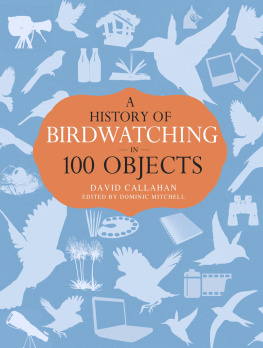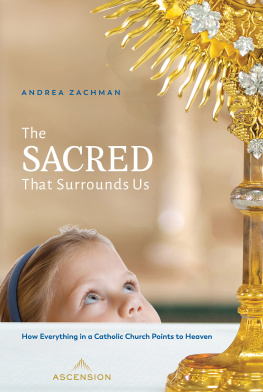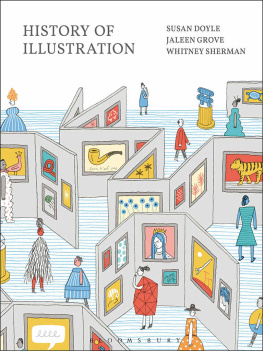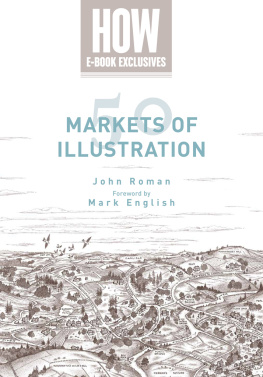
This electronic edition published in 2014 by Bloomsbury Publishing Plc
Published 2014 by Bloomsbury Publishing Plc,
50 Bedford Square, London WC1B 3DP
www.bloomsbury.com
Bloomsbury is a trademark of Bloomsbury Publishing Plc
Copyright 2014 text by David Callahan and Dominic Mitchell
Copyright 2014 photographs is held by the individual photographers see credits on page 220
The right of David Callahan and Dominic Mitchell to be identified as the authors of this work has been asserted by him in accordance with the Copyright, Designs and Patents Act 1988.
ISBN (print) 978-1408-1-8618-3
ISBN (epub) 978-1408-1-8666-4
ISBN (epdf) 978-1408-1-8665-7
All rights reserved
You may not copy, distribute, transmit, reproduce or otherwise make available this publication (or any part of it) in any form, or by any means (including without limitation electronic, digital, optical, mechanical, photocopying, printing, recording or otherwise), without the prior written permission of the publisher. Any person who does any unauthorised act in relation to this publication may be liable to criminal prosecution and civil claims for damages
To find out more about our authors and their books please visit www.bloomsbury.com where you will find extracts, author interviews and details of forthcoming events, and to be the first to hear about latest releases and special offers, sign up for our newsletters here.
Editors foreword
Much has been written about the history of birdwatching, from its early pioneers and famous sons to its centuries-long development and convoluted social history. Once the territory of explorers and colonels and the pastime of clergymen and Edwardian ladies, it now has a large army of devotees at all levels, from garden birdwatchers and keen local patchers to conservation fieldworkers and globe-trotting listers.
In the modern birding era, people from many different backgrounds, sometimes with little else in common, find themselves united by a shared interest in birds. For the keenest, it is integral to who they are, not just what they do. And the origins of their obsession can often be traced back not only by the conventional historical process, but also through critical events and objects which have had a profound and lasting impact.
I first mused over a selection of historically defining birding items back in 2010. My initial thoughts were improved through editorial discussion and debate at Birdwatch magazine, after which the idea came to life as a series of 25 objects through the authorship of David Callahan. Most were obvious choices, a few were more controversial, but all were significant in some way in the development of birdwatching.
Here, in a new and more expansive format, that selection has been refined, developed and extended to 100 objects. While its tempting to describe it as definitive, the reality is that there can be no absolute list. Many readers may find themselves in agreement with most of the items but not all, an inevitable outcome when the choices also reflect personal opinion, interpretation and individual significance. Whatever the shortlist, it has been an intriguing perspective to take on the history of this most absorbing of interests.
Dominic Mitchell
CONTENT S

Introduction
The practice of birdwatching or birding to use its more modern handle is a sensory occupation at its most basic; it entails using and exercising natural visual and aural capabilities to their very limits, to observe the appearance and activities of birds in the wild.
But human limitations become apparent very quickly even when youre in the zone, and it is obvious that some sort of aid will be needed to get you closer to the animal in question, to record its physical characteristics and sounds, and the time and place that you saw it.
To these ends humans have employed methods both simple and complex, and it is these technological advances that have driven the hobby almost from its very beginnings as observations of bird behaviour by hunters and farmers, often essential to their survival. This book aims to chronologically compile the essential innovations that have built the hobby into the gadget-heavy popular pastime we know today.
From the first daubings of megafaunal fowl that humans left on cave walls to the digital images we now text, email and post to our blogs, and from the first imitative whistle to the compressed blastings of an iPod in the field, birding has often been as much about the advantages given by its contemporary tools as it has the objects of our fascination.
If you find youre getting fear of the gear a little, then take heart. Despite all the gadgetry and paraphernalia, birding is a hobby in which you can start from scratch and teach yourself. The birds themselves have changed relatively little in the time span of the hobby you really can still just throw binoculars and a book in a bag, and go birding.
David Callahan
: Arnhemland rock painting
c. 45,000 BP

This red ochre rock art painting is thought to represent two flightless Genyornis newtoni, which probably became extinct about 45,000 years ago, possibly co-existing with aboriginal Australians for several thousand years until the Ice Age climate wiped them out.
Representations of birds date back as far as the cave and rock paintings of the Paleolithic period, which ended with the retreat of Ice Age glaciation about 10,000 years before present (BP). The oldest known rock art in the world, discovered in south-west Arnhemland in Australias Northern Territory, depicts two Emu-like ratites daubed in red ochre and is dated at around 45,000 years BP.
The drawings in the ornithological graffiti closely resemble Genyornis newtoni, a large, short-legged and stubby-beaked carnivorous ratite resembling the modern-day Emu, believed to have become extinct at around that date, coinciding with the original colonisation of humans it was possibly even the first anthropogenic extinction.
An alternative theory is that the paintings are younger the oldest radiocarbon-dated cave drawings being 28,000 years old and from the same region and provide evidence that Genyornis or a similar form became extinct much later than fossils show, probably as a result of the Ice Age. Yet a further possibility is that the painting represents a kind of folk memory of such species, preserved in the local tribes Jawoyn Dreaming beliefs and drawn as a mythological caricature. If the painting is Genyornis, then the rock art represents the first recorded identification of a known species and suggests that throughout the evolution of Homo sapiens, birds have played an important cultural role, literally and possibly even spiritually.
Other ancient artistic depictions of birds include an unidentifiable waterfowl in carved mammoth ivory from Hohle Fels Cave, Bavaria, Germany, dated at between 31,000- 33,000 years BP; a Carrion Crow head in the lower caves at Grotte dOxocelhaya, Pyrnes-Atlantique, France, dated at about 14,000 years BP; and recognisable Sooty Terns drawn about 3,000 years ago on Rapa Nui, Easter Island, in the South Pacific. In fact, as humans spread out of Africa and across the globe, their cave and wall art went with them, and so did their figurative drawings of birds. Africas cave paintings date back almost 25,000 years, those of India and Asia 12,000 years, and basic stick birds are present on cave walls at Rio Pinturas, Argentina, dated at 9,000 years old.












